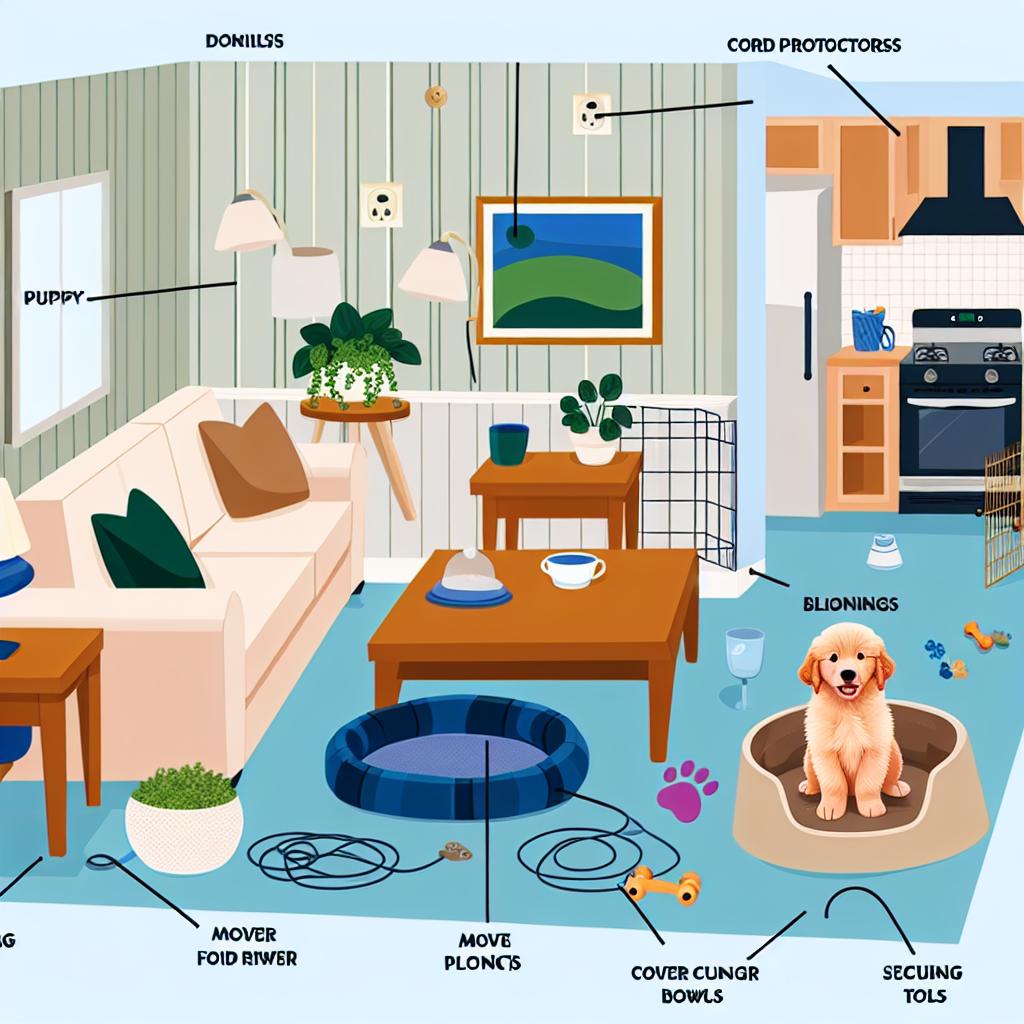
Bringing a new puppy into your household is a significant milestone. It requires thorough preparation to ensure that both the unfamiliar environment is safe for the puppy and that your living conditions remain undisturbed. Ensuring that your home is “puppy-proofed” involves a series of thoughtful installations and adjustments. These preparations are crucial for fostering a safe and inviting environment for your new pet.
To begin with, identify and secure areas in your home that could present potential hazards to a curious puppy. This might involve utilizing physical barriers, such as baby gates, to limit the puppy’s access to certain parts of the house temporarily. Such barriers are particularly useful in rooms that contain electrical cords, chemical cleaning products, or other materials that could pose a risk to the puppy’s health.
Baby gates are an effective way to monitor the puppy’s exploration habits and manage their mobility around the home. Install gates at the entrances of rooms that are not puppy-proofed yet. It’s also a good idea to use barriers to block stairways until your puppy is coordinated enough to manage them safely.
Entrances to rooms that house electrical cords, especially those to devices frequently used, should be restricted. Puppies have a natural tendency to chew and can be attracted to cords. Constant vigilance is required to ensure areas remain secured throughout the day, especially when not under direct supervision.
Puppies can be very enthusiastic explorers, and their curious nature may lead them to accidentally knock over or destroy fragile items. Therefore, it’s pivotal to rearrange the positioning of items such as delicate glassware, ornaments, and small electronics to prevent them from being accessed. Relocate these items to higher shelves or consider protective coverings if relocation is not feasible.
In situations where moving items is not viable, secure fragile things in place. Vases, for instance, can be attached to their surfaces with putty or another adhesive to prevent them from toppling easily.
Once your new puppy has settled in, periodically reassess the placement of valuables and fragile items. As your puppy grows, their ability to reach higher places also increases, so continuous adjustment and observation is necessary to mitigate potential risks.
Electrical safety is crucial when it comes to accommodating a puppy in your home. Puppies have an innate tendency to chew, which can make electrical cords especially enticing and dangerous. Implementing preventive measures will safeguard both your puppy and your equipment.
Using Cord Covers and Tubing:
Installing cord covers or tubing can prevent your puppy from accessing and chewing on power cords. These protective layers can be easily found and installed to ensure cords are not exposed.
Securing Electrical Outlets:
Outlets that are close to the ground should have safety plugs inserted. These plugs act as barriers between curious puppy paws or noses and live electrical sockets. It’s a simple yet effective measure to ensure electrical safety.
Many household plants and cleaning agents can be toxic if ingested by a puppy. Establish secure storage systems for these potential hazards to maintain a safe environment for your pet.
Storage for Chemicals:
Ensure that medications, cleaning agents, and other toxic substances are stored in high cabinets or locked away. If higher storage is not available, consider the use of childproof locks to prevent access.
Ensuring Plant Safety:
Some household plants like lilies, azaleas, and philodendrons can be harmful if ingested. Situate these plants out of reach, perhaps suspended or located in areas inaccessible to a puppy.
Creating a designated area for your puppy encourages adjustment to their new surroundings. This safe space serves as a sanctuary where they can retreat, rest, and feel comfortable. Equip this area with a comfortable bed or crate, toys for engagement, and easy access to water for hydration.
Benefits of a Crate:
Using a crate can offer your puppy a sense of security, particularly when unsupervised. A crate that is suitable in size for your puppy is not only a resting place but also a helpful tool for house training.
Strategically placed puppy gates can help to streamline your puppy’s routine and manage their exploration within your home. They restrict and direct the puppy’s movements in a way that protects areas of your home that are off-limits but encourages them to explore new places safely.
Planning Gate Placement:
Install gates in areas that demarcate zones safe for exploration from those needing supervision, like laundry rooms or kitchens. Gated areas could also serve to train them to use their designated restroom.
The growth spurt of a puppy is notable, and with their rapid development comes an increased ability to reach previously secure areas. Regular inspection of your home environment ensures its continued safety. As your puppy becomes more mobile, adapt and modify your symmetric arrangements to protect your pet optimally as they transition into adulthood.
For further advice, explore more professional puppy training materials and guidelines. Organizations and resources such as The Kennel Club offer extensive guides and resources to aid new puppy owners in optimizing their home environment.
Understanding and implementing these steps steadily will aid in the seamless integration of your puppy into the family. By creating a safe and inviting environment, you not only ensure the safety and happiness of your new companion but also preserve the peace and order within your home.